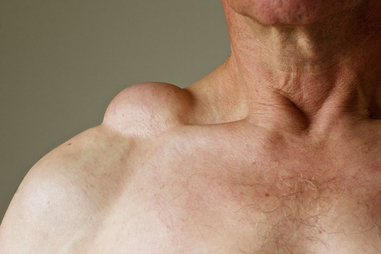
A lipoma is a round or oval-shaped lump of tissue that grows just beneath the skin. It’s made of fat, moves easily when you touch it and doesn’t usually cause pain. Lipomas can appear anywhere on the body, but they’re most common on the back, trunk (torso), arms, shoulders and neck. Lipomas are benign soft tissue tumors. They grow slowly and are not cancerous. Most lipomas don’t need treatment. If a lipoma is bothering you, your healthcare provider can remove it with an outpatient procedure.
Most lipomas don’t need treatment. If a lipoma is bothering you, your provider can remove it surgically. Lipoma removal procedures are safe and effective, and you can usually go home the same day. As an alternative to lipoma surgery, your provider may recommend liposuction to remove the lipoma. Your provider uses a long, thin needle to remove fatty tissue from the growth.
Lipomas aren’t usually painful, but they can be uncomfortable if they press against a nerve or develop near a joint. Many people who have a lipoma don’t notice any symptoms. Lipomas are usually:
Lipomas can develop anywhere on the body. Rarely, lipomas grow on the muscles, internal organs or brain. The majority of people with a lipoma only have one, although more than one lipoma can grow. Most lipomas develop just under the skin on the:
Providers usually diagnose a lipoma during a physical examination. Your provider will touch the lipoma and ask if it’s painful or tender. You may need a biopsy to confirm that the lipoma isn’t cancer. During this procedure, your provider removes a sample of the lipoma and sends it to a lab for testing.
Oftentimes, these may be mistaken for a cyst. To see a clear picture of this lump, your provider may order an imaging test such as an ultrasound, magnetic resonance imaging (MRI) scan, or computed tomography (CT) scan. These imaging studies help your provider determine if it is a lipoma versus a cyst. It can also help identify the lipoma’s location and how deep it is if it has blood vessels and whether it’s pressing against nerves or other tissues.

Copyright © 2022 Dr. Sandhya Bade | All Rights Reserved | Created & Crafted By Itorix Infotech
WhatsApp us